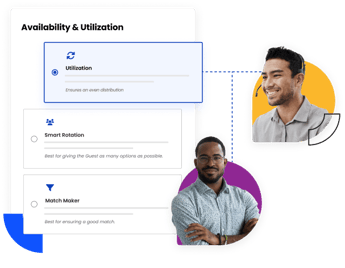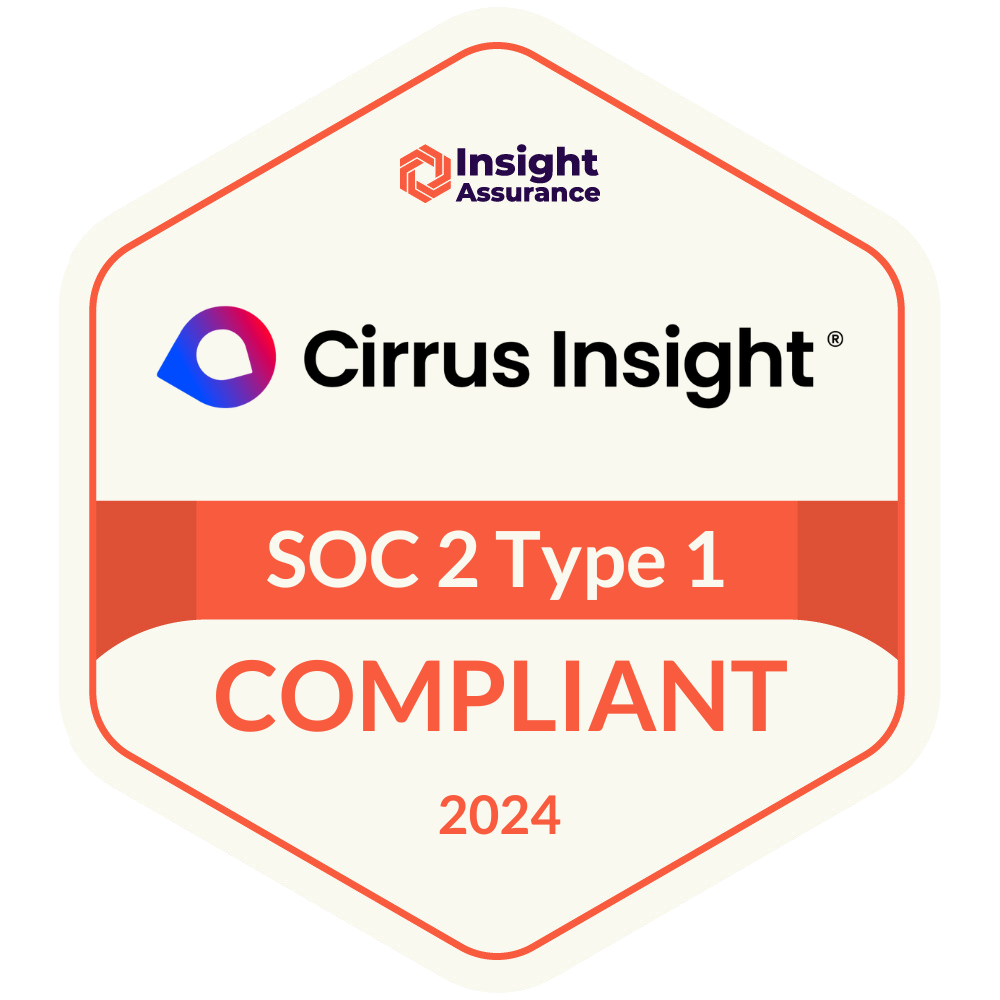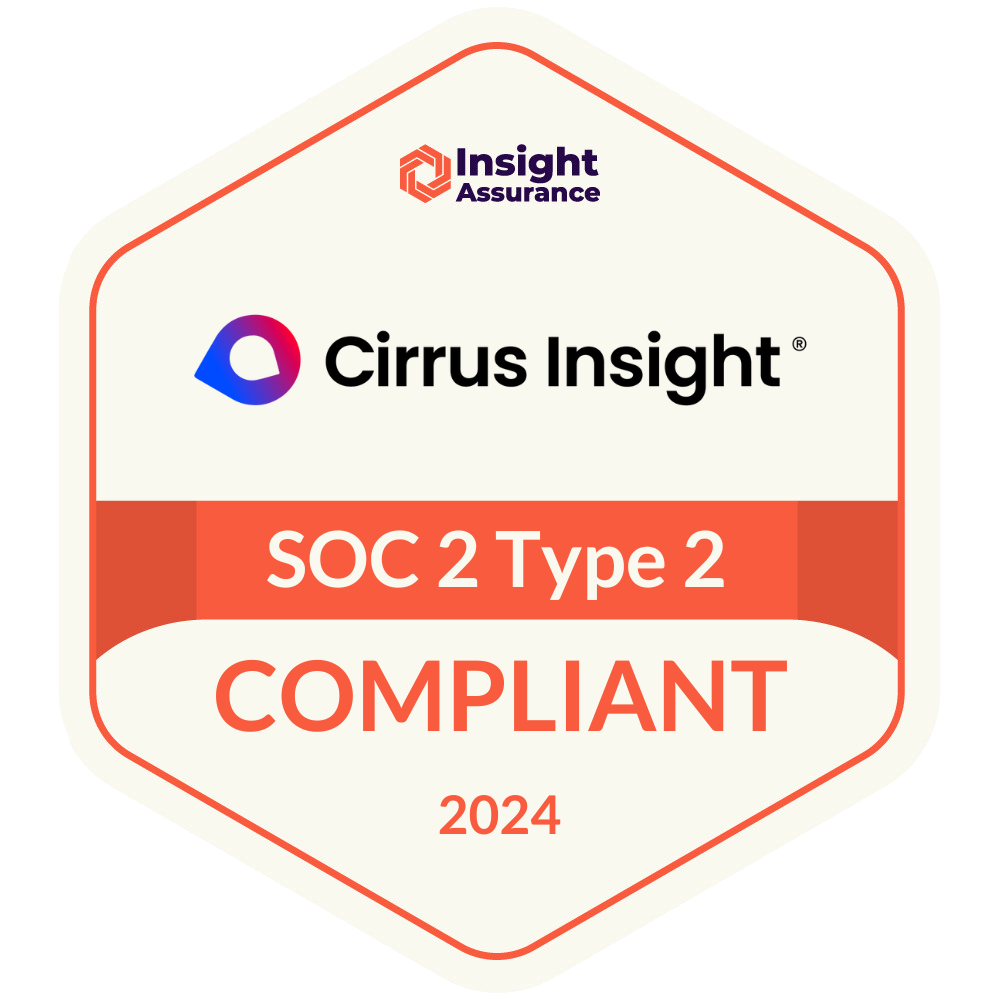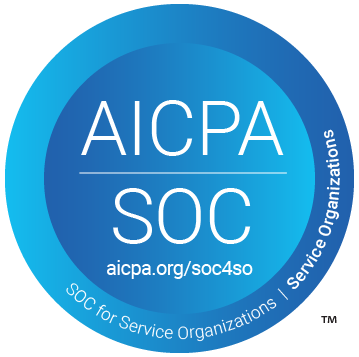- Solutions
-
Products
-
Resources
Sales Automation Tools | Cirrus Insight by Kristi Campbell View all Blog Posts >Get the App, Get the Sidebar, & Get Your Trial Going HereUnleash limitless growth opportunities by partnering with Cirrus Insight.
- Pricing
Filter By:
- All topics
- Sales Productivity
- Sales Intelligence
- Salesforce
- Sales Strategy
- Sales Prospecting
- Book More Meetings
- Best of
- Company News
- Product
- Sales Leadership
- CRM Admininstration
- Sales Metrics
- Supercharge Sales Activity
- Team Scheduling
- Admin
- serious insights
- Prospect Smarter
- Sales Activity Data
- Sales Forecasting
- Scheduling Solutions
- Prospect Faster
- Auto-Sync Everything To Your CRM
- Chrome
- Comparison
- Financial Services
- For Admins
- Getting Started
- IT & Security
- outlook
Subscribe to our Blog for the Latest Insights
Join our blog community to stay informed and receive fresh content and actionable tips directly in your inbox.
Elevating Your Sales Forecasting Game: Techniques and Tools for Better Accuracy
Accurate sales forecasting is the backbone of strategic decision-making, yet it remains one of the toughest challenges for sales leaders. If you are looking for a streamlined approach to elevate the accuracy of your sales forecast, you’re in the right place.
This article cuts through the clutter, providing focused, actionable methods tailored for savvy sales leaders. We’ll explain the dos and don'ts of sales forecasts and which key performance indicators (KPIs) to prioritize as the foundation of your forecast.
Let’s dive into the techniques, insights, and tools that will transform your approach to sales forecasting.
Table of Contents
- What is Sales Forecasting
- 6 Sales Forecasting Methods
- The Key Steps in the Sales Forecasting Process
- Example of a Sales Forecast in the SaaS Industry
- Using Cirrus Insight to Ensure Data Accuracy
- The Role of AI in Sales Forecasting
- Key Performance Indicators (KPIs) in Sales Forecasting
What is Sales Forecasting?
Sales forecasting predicts how well a business will perform at the end of a specific period. It analyzes various factors, like current leads, the economic climate, and historical data.
Sales leaders can use these insights to identify potential areas of growth or decline, helping businesses plan their inventory and marketing efforts and budget accordingly. Furthermore, sales forecasting can provide insight into customer behavior, which can assist businesses in making informed product and service decisions.
Why is Sales Forecasting Crucial for Organizations?
Accurately predicting sales is a critical component of any successful business. It empowers better decision-making, guiding strategic choices such as where to invest in a business. It prompts considerations like whether to cut back spending in a specific territory due to a downturn in the forecast or, conversely, to increase investment when performance exceeds expectations.
Who is Responsible for a Sales Forecast?
Typically, four significant organizational departments contribute directly or indirectly to sales forecasts. They are:
- Sales teams
- Marketing teams
- Management
- Finance teams
The Board and Finance team's responsibility is to make spending and investing decisions that are heavily influenced by sales forecasts. On the other hand, the Sales and Marketing teams focus on the demand side of operations. They directly contribute to sales by engaging in real conversations with customers. So, it would be logical for them to take charge of handling the sales forecast.
Things to Consider Before Annual Sales Planning
A sales plan helps sales leaders set specific targets, establish fun ways to sell products, assess market trends, and determine the resources/skills sales reps need to reach those targets. It's the key to a successful business journey.
When you’re making a sales plan for 2024, here are some major pitfalls you should avoid to get the most out of your plan:
Data challenges can come at a high cost. For instance, when the Opportunity records in your CRM are incomplete, it can greatly skew two crucial KPIs: the Quote-to-Close Ratio and the Monthly Calls or Emails Per Representative. Ensuring data completeness is vital for accurate insights and decision-making.
Rigid strategies: Markets are dynamic and influenced by economic shifts, industry trends, or unexpected events. An inflexible plan may struggle to adapt to these changes, causing the sales strategy to become outdated and less effective.
Here are some tips to avoid these hassles and stay ahead in future sales planning:
- Integrate Salesforce Sync for automated and up-to-date data.
- Regularly review and adjust the plan based on ongoing market shifts.
- Embrace data-driven decision-making.
- Align sales and marketing efforts.
- Embrace technology for productivity.
- Nurture customer-focused strategies.
6 Sales Forecasting Methods
Generally, forecasting falls into two categories:
- Qualitative: revolves around input from people, e.g., surveys. Best for small businesses just starting.
- Quantitative: revolves around input from numerical data, e.g., historical data.
But from experience, the best sales leaders rely on a combination of both. The better the accuracy of the forecast, the better the outcome.
Historical Data-Based Forecasting
Historical data-based forecasting is a forecasting method that uses data to predict sales. It works by analyzing sales data to identify recurring patterns or trends. This could involve using statistical techniques or data visualization to spot trends.
Sales Cycle Length Forecasting
The sales cycle duration model uses past customer purchasing behavior to determine how long a potential customer would take to convert. It is not just about understanding the duration of the sales cycle but also about identifying key factors that influence this duration.
It involves a thorough analysis of the entire sales journey, from initial contact to the final decision. By examining historical data, this method can highlight how different variables - such as product type, customer segment, or marketing strategies - impact the length of the sales cycle.
Additionally, it's crucial to consider external factors like market trends, economic conditions, and competitive landscape, as these can significantly alter the sales cycle's length.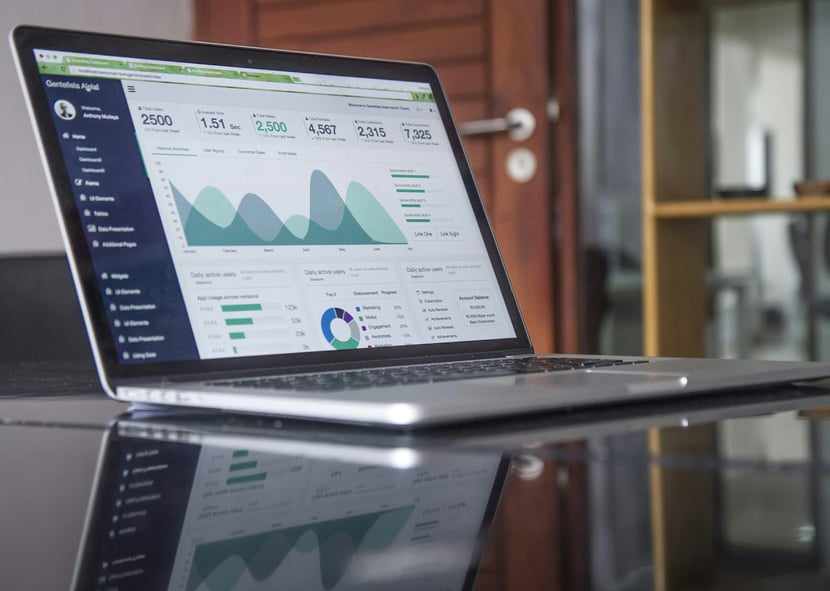
Sales Pipeline-Based Forecasting
Sales pipeline forecasting predicts the tendency of a lead closing by overseeing the entire sales pipeline from first contact to closing the deal. It does so by tracking past sales stages, like the number of leads, deals in each stage, and the time spent at each stage. With that, you can predict how likely a lead will close.
A critical factor of sales pipeline forecast is analyzing the pipeline yield. That is, how much of the pipeline has converted into revenue over a specific period. You can integrate additional factors like stage, touches, or the sales cycle to predict pipeline yield based on similar historical circumstances.
Cirrus Insight's Salesforce Sync solution plays a pivotal role by ensuring sales leaders base their forecasts on complete and up-to-date records in Salesforce. It seamlessly synchronizes emails, calendar events, and tasks directly to Salesforce, reducing manual data entry errors and saving time.
The automated process markedly diminishes the chances of errors and the time-consuming tasks linked with manual data entry.
Through Salesforce Sync, the sales leader is assured a real-time perspective of the sales pipeline, thereby improving the accuracy and reliability of the sales forecast.
Opportunity stage forecasting
Opportunity stage forecasting is a sales forecast model that predicts the probability of a future deal closing at different sales stages. This method is especially beneficial for identifying the strengths and weaknesses in the sales funnel. By analyzing the success rate at each stage, sales leaders can pinpoint where prospects are most likely to drop off or convert.
Test-Market Analysis Forecasting
Test-market analysis has a different approach. Here, you test a product/marketing campaign among a few audiences to see how customers will respond. This method is suitable when you're thinking of launching or validating a new product or market.
Multivariable Analysis Forecasting
Multivariate analysis predicts future trends and outcomes using multiple independent variables. Multivariable analysis forecasting uses data points like price, seasonality, and customer demographics to make predictions. Ultimately, it helps you make better judgments.
The Key Steps in the Sales Forecasting Process
Forecasting sales accurately requires following a series of critical steps. While steps may vary depending on your organization's needs, leveraging predictive sales analytics is often a key component. Here are the basic ones:
1. Choosing the Appropriate Forecasting Model for Your Business
The first step is to consider the type of business you are running, the amount of data you have available, the accuracy of the model, and aligning all the stakeholders to ensure everyone understands the plan. This can come from a single data point or from analyzing and comparing multiple data points.
2. Gathering Historical Sales Data
Historical data forms the basis for almost all sales forecast methods as long as they are quantitative. It uses past sales data like customer behavior, market research, and so on to identify trends and patterns to help predict future sales. 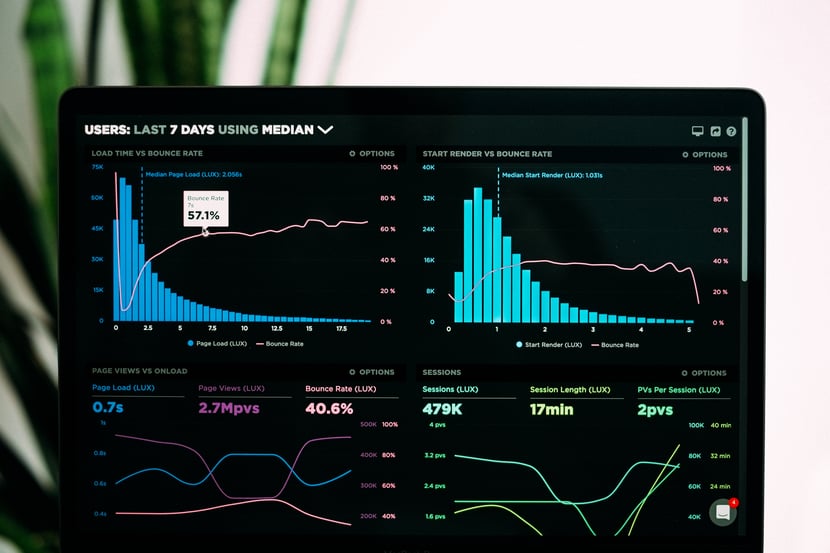
3. Identifying and Analyzing Key Market Trends and Factors
Effective sales forecasting hinges on the ability to swiftly adapt to changing business environments. This requires a keen eye for spotting key market trends and factors that could impact your sales. Here’s how to identify these crucial elements:
- Competitive Changes: Regularly analyze your competitors’ moves, such as new product launches, pricing strategies, or market expansions. Tools like market analysis reports, competitor's public financial statements, or industry news can provide valuable insights.
- Industry Trends: Stay updated with industry reports and publications. Attend webinars and conferences to understand broader market dynamics. Tools like Google Trends or industry-specific analytics platforms can offer a wealth of information.
- Legislative Shifts: Keep an eye on new laws or regulations that could affect your market. This might include changes in trade policies, data protection laws, or industry-specific regulations. Staying compliant and adapting to these changes can give you a competitive edge.
- Product Adoption Trends: Monitor how customers are responding to new products or technologies in your market. Use customer feedback, social media sentiment analysis, and sales data to gauge product adoption rates and customer preferences.
By actively engaging with these areas, you can better anticipate customer demand, identify potential risks, and adjust your sales strategies accordingly. This proactive approach ensures that your sales forecasting remains relevant and responsive to the ever-changing business landscape.
4. Developing a Sales Forecasting Methodology
Adopting a sales forecast framework depends on your data type. Can you lay your hands on previous sales data? If yes, you might look into any quantitative methods that deal with data. If not, you can look into the qualitative ones.
5. Utilizing The Right Sales Forecasting Tools
There are several tools available for sales forecasting. Here is a list of tools that can help you increase the accuracy of quantitative-based forecasting:
- Cirrus Insight
- Salesforce
- Excel
- Zoho
- Gong
- Aviso
While these tools help sales leaders forecast more accurately, two stand out for us.
- Salesforce outshines in comprehensive data tracking but can lose predictability if sales activities go unrecorded.
- Cirrus Insight's Salesforce Sync addresses this, ensuring all emails, meetings, and tasks sync directly into Salesforce for more accurate sales forecasts.

6. Adjusting the Forecast Based on External Factors
In business, there are unforeseen factors like
- Economic downturns
- Technological disruptions and
- Unexpected shifts in consumer behavior
The only way to solve this is through flexibility. By being flexible, you can respond to unexpected challenges, exploit emerging opportunities, reduce risks, and protect stakeholder trust.
7. Monitoring and Reviewing the Accuracy of the Sales Forecast Over Time
Effective sales forecasting demands regular monitoring and adjustments. Utilize Salesforce dashboards and reports for a real-time view of your sales performance versus forecasts. Key features include:
- Sales Performance Dashboards: Compare actual sales with forecasts to identify variances.
- Pipeline Movement Reports: Observe deal progression and pinpoint pipeline stages needing attention.
- Market Trend Analysis: Use Salesforce analytics to assess external factors affecting sales.
- Forecast Accuracy Reports: Continually evaluate forecast precision against actual sales outcomes.
This approach ensures your sales forecasts are consistently refined, accurate, and aligned with market realities.
Example of a Sales Forecast in the SaaS Industry
We'll use a hypothetical SaaS company, "BoomSaaS," as our case study.
Step 1: Data Collection and Preparation
- BoomSaaS starts by gathering historical sales data. This includes data like the churn rate and upsell or cross-sell revenue.
Step 2: Choose the correct forecasting method
- BoomSaaS decided to use a combination of pipeline analysis and qualitative assessments for a better result.
Step 3: Review and Validation
- Sales and finance teams review the forecast to ensure it aligns with their strategic goals and expectations. Then, make necessary adjustments with the insights.
Step 4: Implementation and Monitoring
- To stay on track, they continuously monitor actual sales against the forecast.
Step 5: Continuous improvement
- BoomSaaS improves its forecasting methods based on sales feedback and refines the process for the next period.
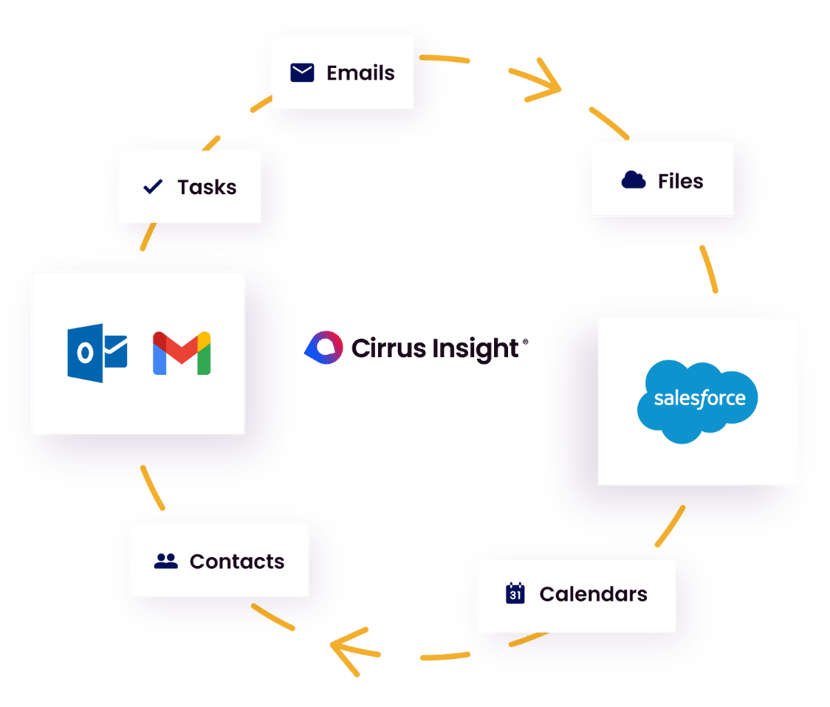
Using Cirrus Insight to Ensure Data Accuracy
A recent Salesforce report shows that sales reps spend only about 28% of their week selling, most of their time ravaged by other tasks like deal management and data entry.
Imagine the percentage increase in revenue if they could spend more time on their primary task — making sales.
Salesforce Sync tool from Cirrus Insight syncs email, tasks, calendar, etc. It automates the data entry process, allowing sales teams to focus more on building customer relationships and making sales.
Benefits of Cirrus Insight:
- Email Sync: Customer email communication directly syncs to Salesforce for activity reporting.
- Calendar Sync: Synchronize all calendar events, including recurring and historical records.
- Task Sync: Sync tasks and workflows to Salesforce.
- Analytics: Track customer activities and convert them into actionable insights.
- Attachment Tracking: Monitor attachment interactions after sending.
- Buyer Signals: Monitor leads' email interactions.
- Email Blast: Communicate at scale with prospects to meet customer needs.
Use Cirrus Insight to Answer Important Sales Forecasting Questions
Cirrus Insight helps sales leaders answer some of the fundamental questions they face during sales forecasting. Such as
- Email Data Points:
- How many emails on average does it take to close a deal?
- How do your in-flight opportunities compare to this benchmark?
- Do you have any opportunities in your forecast that have had no emails in the past 30/60/90 days?
- Event Data Points: similar to emails,
- How many events on average does it take to close a deal?
- How do your in-flight opportunities compare to this benchmark?
- Do you have any opportunities in your forecast that have had no events in the past 30/60/90 days?
- Stakeholders Involved: Use email data points from Cirrus Insight to understand how many stakeholders, and which ones, are involved in an opportunity to predict whether the deal will close or not?

The Role of AI in Sales Forecasting
AI for sales forecasting is gaining prominence across industries. These AI-driven forecasting models excel at identifying patterns within massive datasets, delivering predictions with exceptional accuracy.
Some of the benefits of incorporating AI in sales forecasting are to:
- Improve lead scoring and pipeline management
- Adaptivity to increased efficiency
- Improve accuracy
There are also some challenges like;
- Potential Bias in AI Algorithms: AI can inherit biases from past data, leading to unfair predictions.
- The Need for Good Data: Accurate data is crucial for reliable AI predictions.
AI's increasing influence in sales forecasting signals a significant change in various sectors. By leveraging AI-driven forecasting models, sales leaders can achieve exceptional pattern recognition in large datasets, leading to highly accurate predictions.
Key Performance Indicators (KPIs) in Sales Forecasting
Sales KPIs measure the result of a specific selling activity against overarching goals. To track the accuracy and effectiveness, you need to follow these KPIs:
- Monthly Sales Growth
This metric measures the percentage change in a company's sales from month to month. It shows a company's sales and financial performance during a specific time frame.
- Average Profit Margin
Average Profit Margin shows sales managers how well your company makes money. It's a gauge of a company's financial status.
- Monthly Sales Bookings
This refers to the total number of bookings or orders a company receives in a specific month. Although it may not represent the immediate revenue, it shows commitment to future sales.
- Sales Opportunities
Using sales opportunity KPIs, sales managers can predict which leads are the most valuable.
- Sales Target
This KPI measures if reps are on track to meet targets. The analysis compares the sales performance to established targets or previous periods.
- Quote-To-Close Ratio
The essence of measuring this KPI is to analyze the effectiveness of the sales process. It shows the percentage of sales quotes that successfully turn into closed deals.
- Average Purchase Value
By using this KPI, sales reps can gain insight into their customers' spending patterns and make better marketing and pricing decisions.
- Monthly Calls (or emails) Per Sales Rep
This KPI measures sales reps' productivity level. How many emails could they send? How many calls did they make? And so on.
Knowing the Sales KPIs, especially the historical average quantity of sales activities that a sales rep takes is crucial for having an accurate view of their productivity. Salesforce Sync solves this by taking the burden of updating Salesforce off of the rep. Making them more productive and giving sales leaders accurate data.
Common Sales Forecasting Mistakes to Avoid
While knowing how to forecast sales may be one of the best ways to predict future sales and make better sales decisions, there are some mistakes you must avoid.
1. Over-reliance on Historical Data
Over-reliance on historical sales data is one of the most common mistakes. What if the data is incorrect or contains assumptions or biases? The past may not accurately reflect the future, which poses a danger. Furthermore, sales leaders should consider external factors such as the economy and customer demands.
2. Ignoring Market Changes
Markets may change at any point in time. We all remember how the COVID-19 pandemic caused a complete shift in business operations, with many companies switching to digital solutions quickly. The way forward is to anticipate these shifts and respond to them.
3. Unrealistic Sales Targets
It's good to set a challenge for sales reps, but make sure you're not pushing them to a breaking point and that the challenge is achievable. Goals should depend on assessing market conditions, resources, and capability of sales leaders.
Unrealistic goals may lead to burnout, demotivation, resignations, poor customer relationships, etc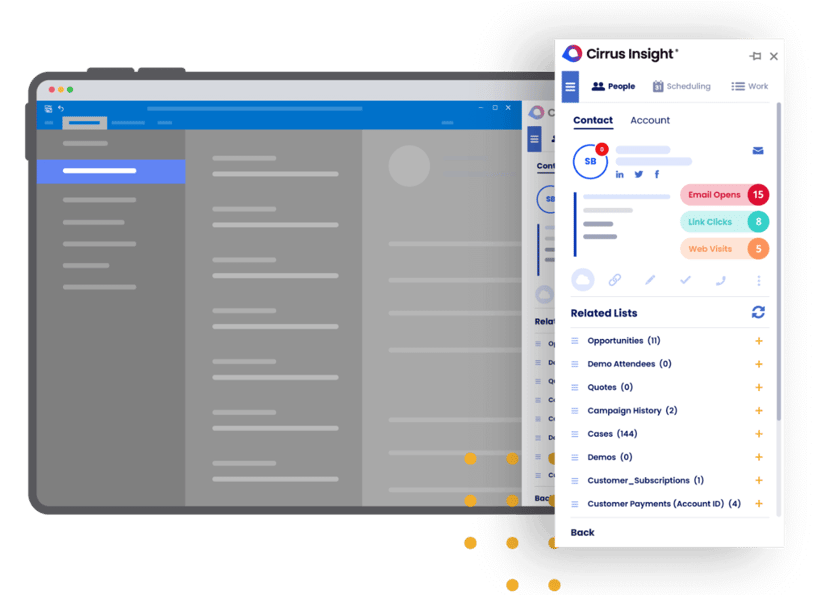
Learn More about Cirrus Insight Tools
Proper sales forecasting holds great significance. Despite market dynamics and consumer behavior changes, accurate sales forecasts are always necessary. Effective forecasting practices allow sales reps to adjust to changing conditions and make informed decisions.
When you meticulously assess your sales forecast model with set objectives, you enhance your understanding of sales performance and enable strategic resource allocation, risk management, and customer satisfaction.
And what's more incredible is how tools from Cirrus Insight can help you in these. It allows you to access CRM data, create and update contacts, and track emails and customer interactions directly from your email client. Ultimately, it streamlines sales and CRM by providing a more efficient way to manage and track customer information and communication.
Spend More Time Focused on Revenue Generation
Test drive Cirrus Insight free for 14-days. No credit card required.
